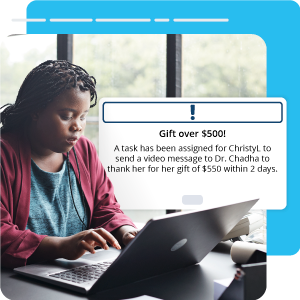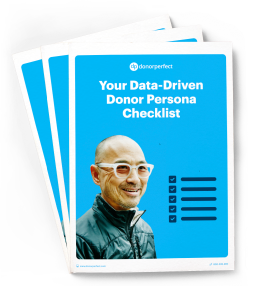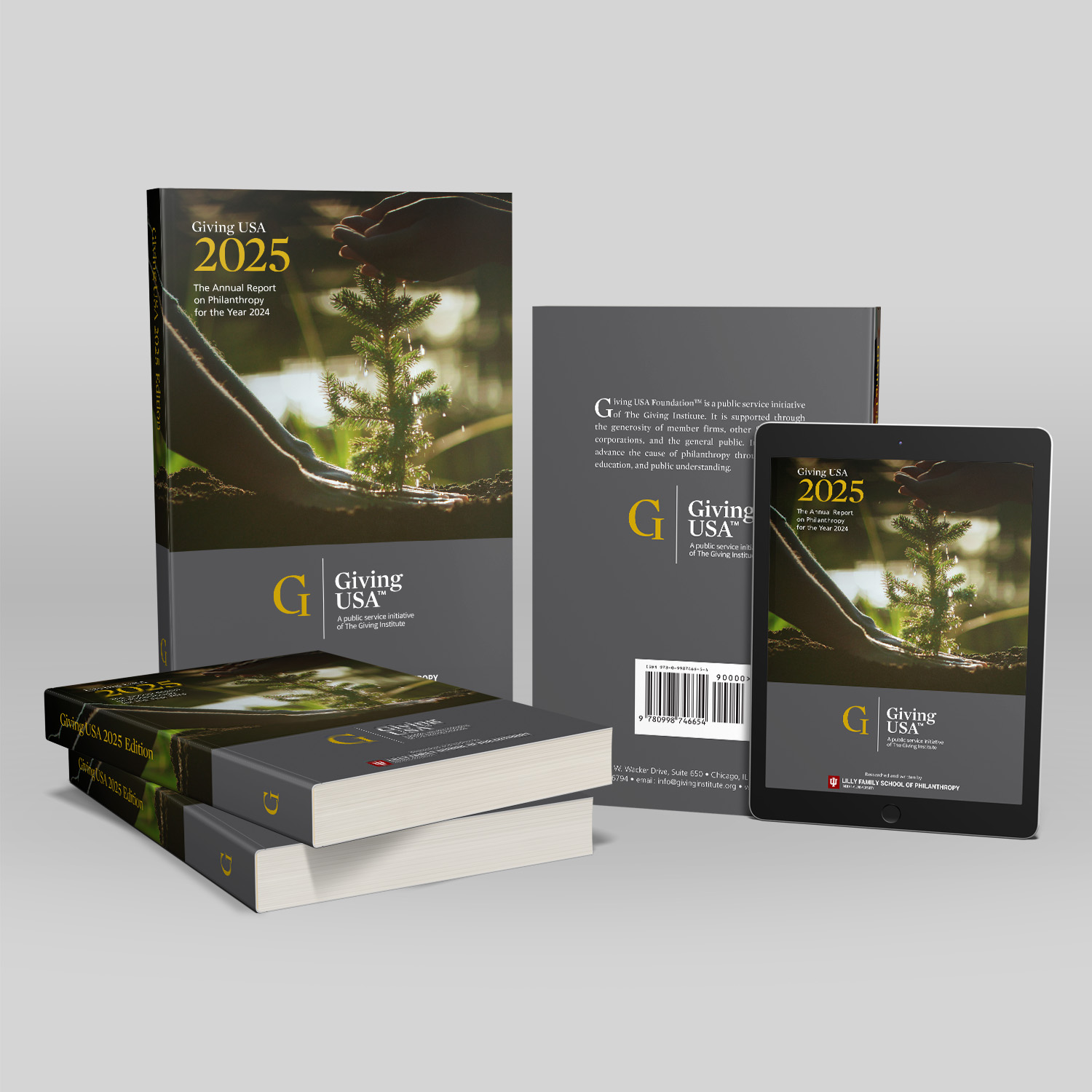
By Ally Orlando, Marketing Communications Specialist at DonorPerfect
Tips that make fundraising marketing a breeze
Just like in your personal relationships, it’s best practice to give as much as you take from your donors and listen as much as you talk. Good communication is essential to fundraising success. Automation tools can effectively minimize your time spent on manual tasks to make time for meaningful engagements. However, system efficiency won’t mean much if you’re not focused on your donors’ experience.
When it comes to communication, more than half of donors aren’t getting what they need. If your fundraising communications strategy hasn’t been updated in a while, your organization may have noticed a drop in donor retention, or experienced a lack of engagement. You don’t have to get used to that. Fostering long-term, fulfilling relationships with your donors can be simplified by differentiating two types of fundraising that exist today:
Transactional fundraising is simply asking for and receiving money. This practice offers a fleeting sense of accomplishment with little room for growth and large-scale change.
Transformational fundraising is encouraging intentional progress toward a long-term outcome with initiatives like a donor welcome series or gratitude programs. These strategies prioritize timely, meaningful touchpoints that are proven to develop donor relationships.
6 tips to transform your fundraising communications for improved engagement and efficiency
In a transformational fundraising model, your outreach efforts should be centered around each donor and the progression of their journey, rather than your workflow.
Shape your daily tasks around your donors with their experience in mind:
- Schedule donor outreach tasks with ease
- Trigger automatic tasks based on donor data
- Communicate clearly with automated receipting
- Strengthen donor data with history and insights
- Leverage dynamic lists to keep content relevant
- Keep donor conversations in one place for continuity
Fundraising communications strategy tip #1
Schedule donor outreach tasks with ease
Look for a task management tool that allows you to easily review and complete donor engagement activities in one place. With an overview of assigned donor outreach efforts at the start of each day, each team member can be more efficient in completing these activities promptly, and schedule any necessary follow up.
For example, if a donor gives a gift greater than $500, your organization will want to connect with them personally to express gratitude for their major gift. To ensure completion, outreach activities like these should have a scheduled due date and a delegated team member. It’s also important to notate all outreach efforts within the donor’s record to avoid confusion and accurately map their journey going forward.

Fundraising communications strategy tip #2
Trigger automatic tasks based on donor activity
To encourage progression through your donor’s journey, you can trigger (and assign) specific tasks based on the information you gather about them through your outreach efforts and online donation forms. You want to collect data about their recency and frequency of giving, as well as their lifetime total and major gift amounts, to update their donor record and highlight donor engagement opportunities.
Following the example from tip #1: When your organization receives a gift of $500 or more (or a different amount of your choosing), you can prompt your team to make a thank-you phone call by assigning the task to your communications director with a due date and notate the engagement within the specific donor’s record. If the donor responded well to the phone call, you may want to consider triggering a task for each time this type of donation is made.
Fundraising communications strategy tip #3
Communicate clearly with automated gift acknowledgement
Automated receipting tools allow you to acknowledge each gift as soon as possible, as studies show: the sooner the better. Donors are 4x more likely to give to your mission again when you thank them within 48 hours. Even if you don’t have an automatic feature turned on, make sure each donor receives prompt confirmation (and appreciation) by setting alerts for yourself that prompt you to process pending receipts.
Beyond receipting, you can incorporate drip campaigns into your transformed fundraising communications strategy to keep donors posted on progress. This supports the idea of giving as much as you take, as each email in your drip campaign can ease donors through their journey to further giving (and knowledge of the cause).
Depending on how they interact with your emails – like clicking to join you on social media or sign up for your monthly giving program – you can queue up a welcome series or regular impact updates.
Fundraising communications strategy tip #4
Strengthen donor data with history and insights
Just like in life, a donor’s journey is driven by their personal values and resources. Donor information shouldn’t just be considered fodder for upcoming marketing opportunities, but a window into their capacity to foster change. To energize the donor community centered around your cause, it’s important to put yourself in their shoes and survey their preferences.
You can let out a sigh of relief knowing you don’t have to carve out time for a conversation with each individual donor. With DonorPerfect, you can simply take a snapshot of each donor’s key metrics – gift recency, gift frequency, involvement in monthly programs, and lifetime gift amount – to quickly review before you reach out to them. To send fundraising communications that are sure to motivate donors, you can take your research a step further by leveraging wealth data, religious and political affiliations, stocks, real estate, and more.

Carve out your unique donor personas and craft personalized messaging with insights like location, degree, marital status, industry, religious affiliation, and calculated wealth rating. Leverage these demographics with your free guide: The Donor Persona Checklist.
Fundraising communications strategy tip #5
Leverage dynamic lists to keep content relevant
Segmenting your contact lists keeps your nonprofit fundraising communications relevant to your donors, but keeping up with your lists can be just as taxing as segmenting them in the first place. Dynamic lists allow you to automatically update your contact list when a new contact meets your filter criteria. To make your communications as meaningful as possible, dynamic lists are also an opportunity for your organization to apply survey results – as mentioned in tip #4 – to your list filters to respect your donors’ preferences.
For example, if you invite new donors to choose their contact preferences in a quick survey, each one that prefers to engage with your organization through social media can be automatically added to your dynamic list to receive a drip campaign suggesting ways to get involved through social media.
Fundraising communications strategy tip #6
Keep donor conversations in one place for continuity
It’s important to keep your fundraising communications in one central place to avoid confusion and stay aligned with your team. There’s no way to know if you’re effectively communicating with donors if you aren’t tracking all engagements through one platform.
And it’s not always as simple as encouraging all team members to use one platform – there may still be fundraising communications that slip through the cracks. With high turnover rates in the nonprofit sector and remote work arrangements growing in popularity, people in your organization are bound to send emails through Outlook, Gmail, and other tools instead of your CRM where everything is tracked and measured.
Transformational fundraising means creating such a relationship with your donors that when they think of a cause, they think of your nonprofit – because you think of them. You reach out to see how they’re doing, let them know the change they’ve created, and inspire them to continue their involvement through similar initiatives in the future.
This piece was contributed by Ally Orlando, from the DonorPerfect Fundraising CRM Team. DonorPerfect has been a leader in nonprofit technology for over 40 years and has over 50,000 users worldwide, helping organizations raise over 100 billion. Visit DonorPerfect’s fundraising blog for other useful tips.


